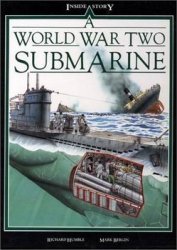Music during the late 18th and early 19th centuries was an important part of American life. Religious services, usually focused on the Psalms, had long included music. In the 1760s and 1770s an important transformation occurred. Following English fashions, colonial Americans increasingly introduced sacred music. This practice led to the importation of organs, the use of more hymns, and the development of singing schools in New England and elsewhere. Initially, colonial Americans imported their music. But in 1770 William Billings published The New-Eng-land Psalm Singer; or American Chorister. . . , a collection of music that was entirely American. Billings not only wrote the tunes but he also included singing instructions to be used in schools. The book was immensely popular and had a dramatic impact on music in North America.
Music also had more secular uses. Within the gentry, or upper class, music lessons were part of the children’s curriculum. The best homes often had numerous instruments for their occupants’ use. Robert Carter’s plantation in Virginia, for example, included a harpsichord, harmonica, forte-piano, guitar, violin, and flutes. Sheet music published in London, Paris, Vienna, and other European centers was available in book shops and specialty stores, and featured composers of the period such as Haydn, Mozart, Beethoven, Schubert, and others. With chores and lessons done for the day, an evening’s entertainment often consisted of family members gathering together and playing music.
Those European Americans farther down the social scale also enjoyed music. They might have had fewer instruments available, but that did not stop them from playing or singing music. Billings, for instance, came from an obscure background, apprenticed as a tanner as a youth, and worked as a tradesman most of his life. For such individuals, whether in the church, at home, or in a TAVERN, music was a major form of entertainment.
Equally as important as well-played music was mastering the art of dance. Carter’s home also boasted a separate ballroom, and, in Virginia, where farms and plantations were often far apart, a ball drew people from miles around for a chance to socialize and exchange news and information. The children learned the complicated steps for stately court dances, such as the minuet, as well as those for hornpipes and country dances, the cotillion and the quadrille, a dance that became increasingly fashionable after the turn of the 19th century. Many of the leading European composers also wrote for the dance. Although they may not have had formal training, common folk also danced, ordinarily to popular country tunes of unknown origin.
The enjoyment of music and dance was not confined to the free white population or to the upper classes. On more than one occasion, the slaves at Carter’s plantation met to play the fiddle or the banjo and to dance. Music often had a poignant meaning for enslaved African Americans. It was a means to express resentment over their condition and also a release from the harsh realities of their daily world. By the beginning of the 19th century, as more and more African Americans turned to Christianity, the so-called Negro spiritual developed that fulfilled these functions and also served as a means of teaching stories from the Bible. Free African Americans used music, especially at certain festivals, such as Pinkster, a secular celebration of Pentecost. African Americans would gather and play banjos, fiddles, and drums, shake rattles made up of pebbles or shells in a basket, and sing. These venues gave them the opportunity to maintain elements of their African heritage and ritual, while creating a distinct African-American culture.
In addition to serving for religious and private enjoyment, music also had important public functions. During the resistance movement (1764-75), music was a means to deride opponents and to garner collective support. Once the Revolutionary War (1775-83) broke out the political role of music became even more important. “Yankee Doodle,” which emerged before the war as a popular tune, became identified with the cause of independence. Other songs were more spontaneous and are lost to us today. Common sailors and soldiers composed stanza after stanza in camps and aboard ships trumpeting their cause and their heroes. Some of the music flowed from the pens of men like Billings. The patriotic undertones in the New-England Songster became explicit in his more secular The Singing Master’s Assistant, or Key to Practical Music first published in 1778. In this work, which soldiers often carried with them, Billings joined the revolutionary cause with the Bible and portrayed the British in an “Infernal League” conspiring against “New England’s God.”
Music also had a military purpose. The British, Hessians, and French had the most elaborate bands for performances. While George Washington believed that “Nothing is more agreeable, and ornamental than good music,” the Continental army had only a few bands of musicians accompanying its regiments. In all of the armies that fought in the war fifers and drummers were used primarily for signaling purposes. The sound emitted by an 18th-century drum could be heard for long distances over the din of battle. Certain beats were used to transmit orders on the battlefield, as well as for regulating routine when in camp.
After the war, music continued to play an important role in civic occasions and celebrations, such as military training days, election day, and the Fourth of July. The local tavern was usually the focal point for public meetings and political rallies. Much of the music making that occurred in these situations was informal, however, little documentation of it remains. Popular songs found a spirited audience in tavern patrons, and were sung alone or to the accompaniment of a dance fiddle or other instrument. Prominent tunes, reset to new words, easily lent themselves to the purpose of political criticism or satire. In the emerging party politics of the 1790s and early 1800s, the Federalist Party and the Democratic-Republican Party had their own political tunes to taunt each other. The Democratic-Republicans sang French revolutionary tunes, while members of the Federalist Party, influenced in part by Great Britain, developed songs such as “Hail Columbia.” Similarly, when Francis Scott Key wrote his “Star Spangled Banner” in 1814, it was quickly set to the music of an English drinking song.
Although music was usually participatory, there were also public concerts in taverns, theaters, and other public spaces. Before the Revolutionary War concerts were relatively infrequent, and featured amateur musicians, usually prominent gentlemen. After the war, an increasing numbers of professional musicians came to the United States. Many had been trained in Germany and France, and offered their talents as performers, teachers, and instrument makers. Benefit concerts sometimes raised money for the needy, but were usually for the support of the musician who organized it. Subscription concerts were a series of performances, usually two per month for a total of 10 or 12, that were advertised in the newspapers, with tickets for individual concerts available for sale at various locations. Most of the music presented featured the works of composers still living or only recently deceased. Franz Haydn was especially popular, but Mozart apparently was not very popular with North American audiences during his lifetime.
See also popular culture; theater.
Further reading: Richard L. Bushman, The Refinement of America: Persons, Houses, Cities (New York: Knopf, 1992); James R. Heintze, ed., American Musical Life in Context and Practice to 1865 (New York: Garland, 1994); John Fitzhugh Millar, Country Dances of Colonial America (Williamsburg, Va.: Thirteen Colonies Press, 1990); Jane C. Nylander, Our Own Snug Fireside, 1760-1860 (New York: Knopf, 1993); Kenneth Silverman, The Cultural History of the American Revolution: Painting, Music, Literature, and Theatre in the Colonies and the United States from the Treaty of Paris to the Inauguration of George Washington, 1763-1789 (New York: Columbia University Press, 1976).
—Rita M. Broyles




 World History
World History









